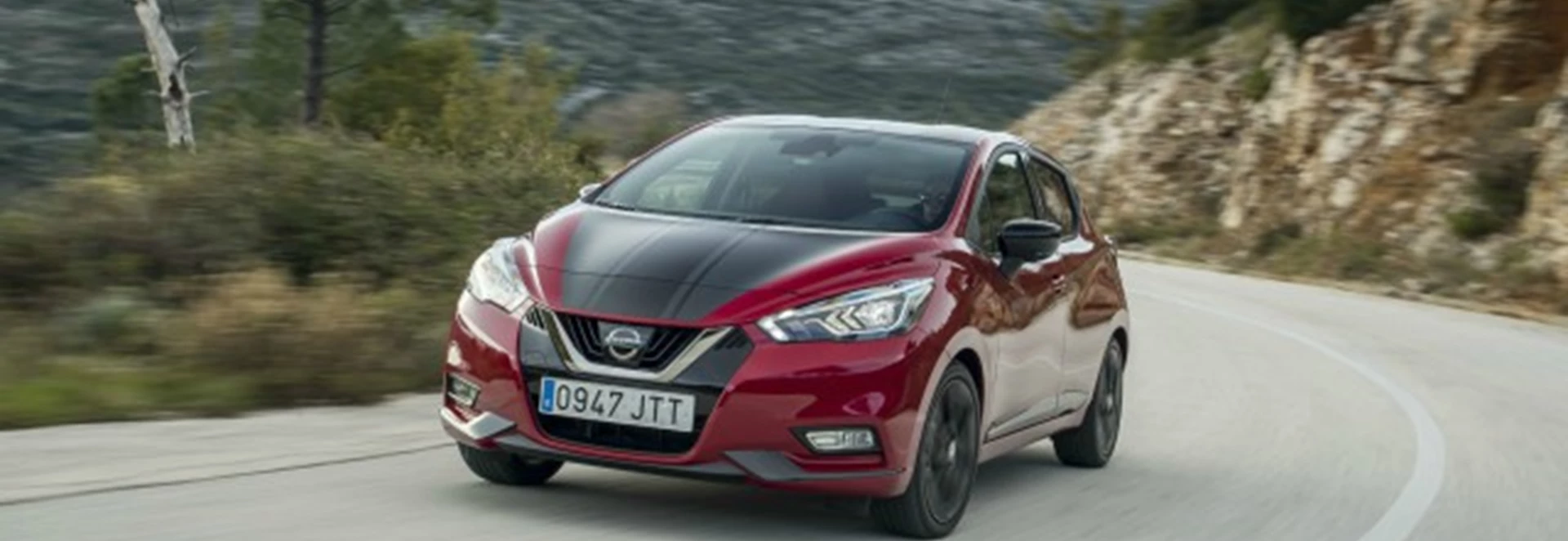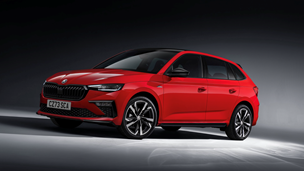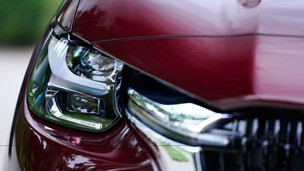Nissan admits that the previous-generation Micra wasn’t as good as it could have been. But Nissan has also made it clear why that was. It was designed for global sale and therefore had to tick a series of boxes that, ultimately, prevented it being great.
So what’s different about this new Micra then? Well, Nissan has designed this one in Europe, for Europe. No excuses then.
From the off, Nissan was keen to identify what current Micra owners, as well as all other supermini owners, wanted to see in the new Micra. After numerous surveys, a design was concocted. It was to take dimension inspiration from the Renault Clio, integrate angular Japanese styling and have a sporty, youthful character that would resonate with younger buyers.
Nissan did consider ditching the Micra badge and going for something new, but Nissan favoured the heritage of the Micra badge over a fresh name.
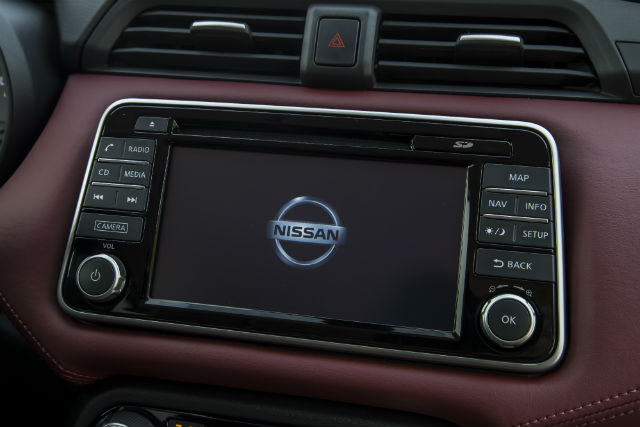
This is a car that boasts a completely rejuvenated exterior design, a new bespoke and booming Bose sound system, body decals, 125 colour combinations, an official car sharing scheme and it’s a 2017 Car of the Year finalist.
Its engine range also gets a revamp, with the existing 1.2-litre gone, thankfully, in place of two turbos, a 0.9-litre petrol and 1.5-litre diesel, and a naturally-aspirated entry-level 1.0-litre petrol. The mid-range 0.9-litre Acenta model is expected to be the most popular.
Like it or hate it, the Micra is a massive car. It has 3.5 million sales to its name in Europe, 1.1 million of which were in the UK. Nissan plans to keep its existing customers happy, but open its arms to new, more youthful customers – and it is confident it can do so.
I’m going to get this in early – forget everything you know about the Nissan Micra.
Performance 3.5/5
Three pot turbos usually come accompanied with a familiar list of characteristics. The Micra’s 0.9-litre IG-T is no different.
When feathering the accelerator and setting off, the little 0.9-litre lets out a faint motorbike-like rumble, and at the 20 to 30mph mark, the Micra is as expected, inoffensive and sensible. At 2,250rpm however, the 89bhp 0.9-litre bursts into life.
It’s not powerful, but it’s a playful little thing, much like Fiat’s 0.9 TwinAir, with just enough pull from the turbo to keep up with traffic and, given a decent stretch of road, have a bit of fun. It certainly has more guts than the outgoing 1.2-litre petrol of the previous-gen Micra.
The bursts of energy from the 0.9-litre are rather short lived though – and it can be tough to judge when the turbo will stop puffing away - so when driving it hard, you will likely find yourself leaving your hand on the gearstick awaiting another quick change. The five-speed manual gearbox, which is the only available transmission in the new Micra, happily finds its way through the gears confidently.
Ride and Handling 4/5
Do you completely rejuvenate the Micra’s driving dynamics and potentially isolate the car’s loyal battalion of fans? Or, do you keep it the same and hinder its potential of appealing to younger drivers? Well, Nissan has done the sensible thing and gone straight down the middle.
The driving dynamics of the previous-gen Micra were, frankly, dull. It craved supermarket sweeps rather than tantalising hairpins. The new Micra doesn’t quite meet boy racer Ford Fiesta or Mazda2 standards, but it certainly goes toe-to-toe with rivals like the Vauxhall Corsa.
The steering is sharper and heavier than before, albeit its weighting a tad artificial, and it feels much more confident when cornering. Get up to speed on a winding road and it feels light on its feet – with the front-end happy to tuck into an apex if you’re feeling adventurous.
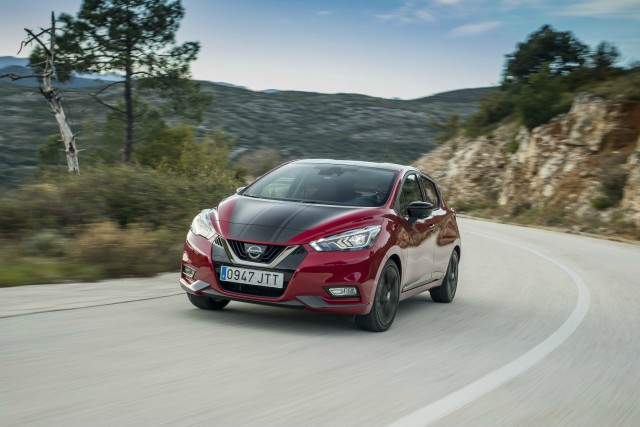
The Micra also features Nissan’s Intelligent Ride Control and Trace Control. These are always active and essentially use the car’s engine and brakes to maintain a more stable stance when going over bumps and when cornering – ultimately making it more surefooted in changing road conditions.
Of course, it has its limits, but rather reassuringly so, it is easy to find that all important sweet spot between sensible and sporty.
Drive it sedately however and the Micra still has plenty to offer from a run around point of view, with the suspension behaving itself over bumps and the cabin insulation doing an excellent job of blocking out wind and road noise.
Thankfully, Nissan hasn’t gone for the safe and overtly sedate approach with the new Micra, unlike the supermini’s bigger brother, the Pulsar. And the Micra is much better for it.
Interior and Equipment 4/5
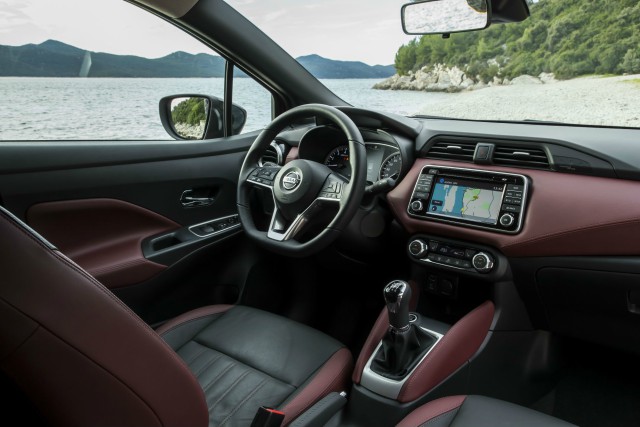
The fact that the new Micra has been built for the European market becomes abundantly clear when you step inside the cabin. Gone are the harsh plastics and dull van-like layout, in place of a much more cohesive, up-market design. Its neat layout, along with colourful leather inserts, reminds us a bit of the Mazda2 and Hyundai i20. The burgundy leather inserts in our test car looked particularly smart.
Standard kit highlights on our flagship Tekna model included a rear-view camera, 17-inch alloys, NissanConnect seven-inch touchscreen with satnav, cruise control, climate control and the Bose Personal audio system.
The latter is an interesting addition. The Bose system uses a series of small speakers dotted around the cabin (including in the drivers’ headrest) to offer more immersive sound quality. It allows the driver to play around with everything from bass to treble and the direction of where the sound is coming from.
And fair play to Nissan and Bose, it really does work – we would recommend listening to loud music to get the best effect. One of the best things about the system is that it doesn’t have a boot-mounted subwoofer, which saves on storage space.
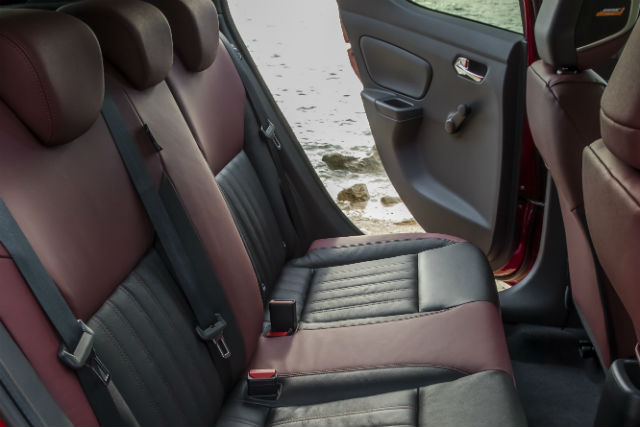
The Tekna does of course have all the best treats, with the Bose system being an optional £500 elsewhere in the range, but standard equipment on entry-level Micras is still impressive, particularly when it comes to safety kit. There’s Hill Start Assist, Emergency Braking and Lane Departure Warning all thrown in – along with the likes of LED daytime running lights and Bluetooth.
A quick note on connectivity, the NissanConnect system does feature Apple CarPlay, but from launch will not feature Android Auto.
When it comes to practicality, the Micra is about par for the course, good in some places and not so much in others. The rear seats offer a decent amount of leg room but head room is very cramped. The boot has 300 litres of storage space, more than the Ford Fiesta and Vauxhall Corsa, but has a high loading lip and a chunky hump when you fold the seats down.
Costs 3.5/5
As with many other highly fashionable and endlessly customisable small cars out there, the Micra can get very expensive. Go for an entry-level 1.0-litre 74bhp petrol Visia model and you will pay £11,995. Aim higher and go for the 0.9-litre 89bhp Tekna model we drove and you’ll be looking at paying £17,295.
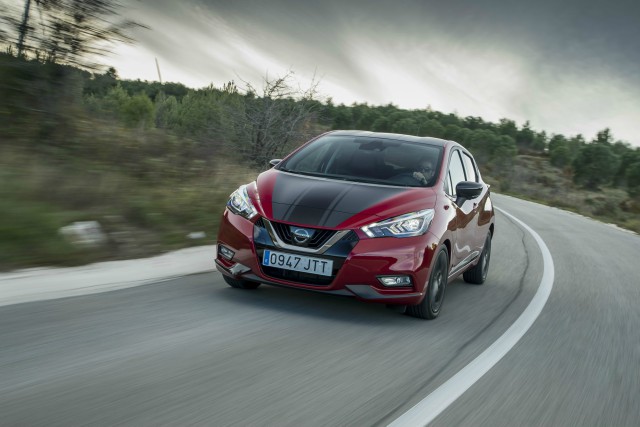
£17,295 is pricey for a supermini, but when compared to its equivalently-equipped rivals, the Micra is relatively competitive. However, with Nissan no doubt looking to attract younger drivers with the higher, more tech-savvy trims, it’s hard to see why a younger buyer would opt for the Tekna trim Micra when for £600 more they could have a Ford Fiesta ST hot hatch.
Fuel economy wise, the 0.9-litre Tekna model, with the 17-inch alloys, claims an mpg figure in the mid to high 50s. As it is a three-pot turbo, that figure is going to be very difficult to achieve, and you are more likely to get around 40mpg in real world driving.
Verdict 4/5
Nissan has improved its Micra in every aspect of its drive and personality – there’s no question about it. Nissan’s got a great supermini product that could do extremely well… provided it can convince the world of its new image.
It doesn’t do anything exceptional when compared to its long list of rivals, but in the small car market that’s not always necessary. Being different and fresh can attract just as much attention.
Nissan hopes that in the next year or so the new Micra will be a top ten seller in the supermini market. There’s no reason why that can’t happen.
